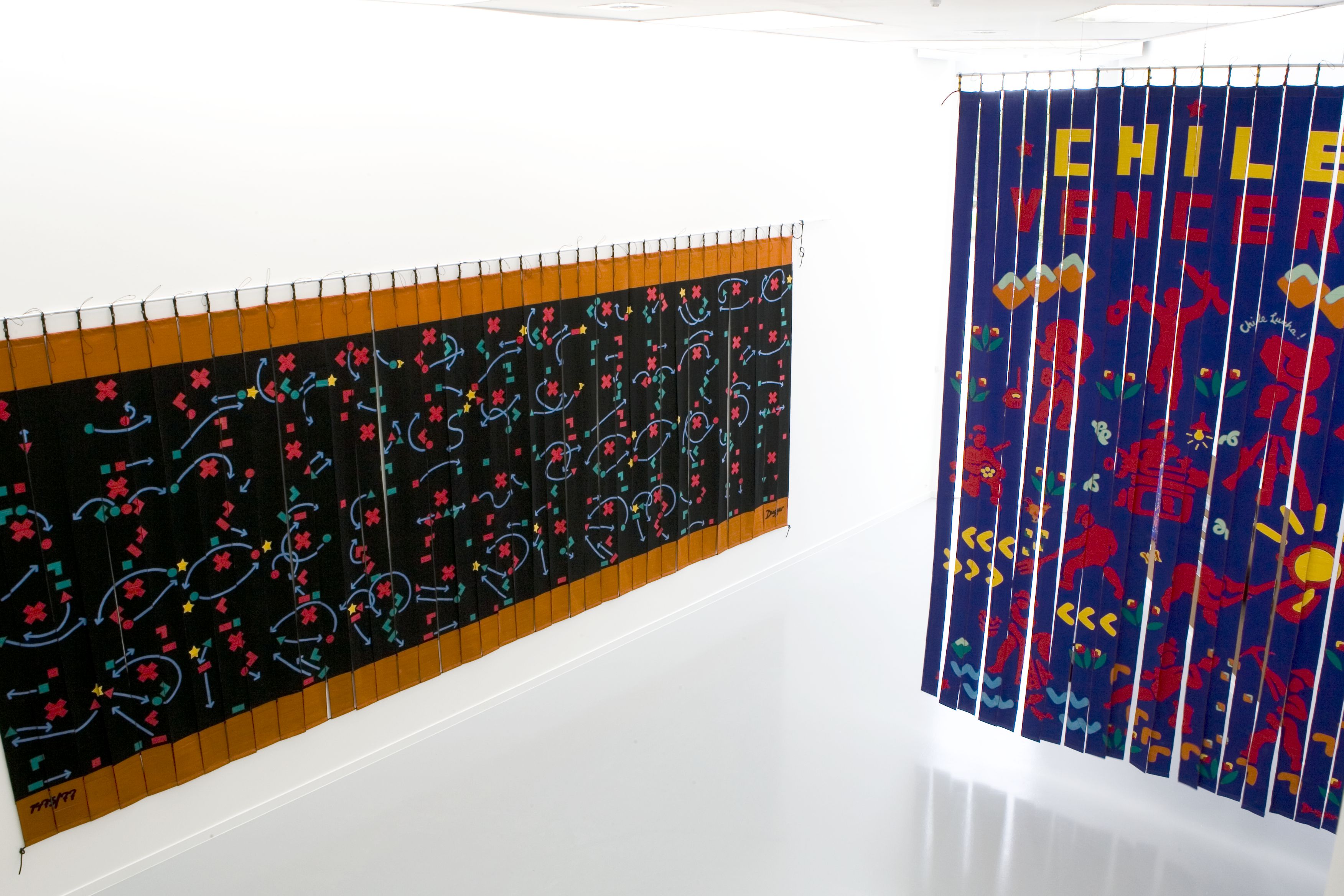Textiles Art and the Social Fabric
Textiles Art and the Social Fabric is a large scale exhibition of artists who use textile materials and concepts in their work. Textiles can communicate social meaning and address the political as it appears in subjects such as labour, culture, identity, protest and display. Textiles are positioned close to the body but expand outwards to occupy civic space; they connect to human subjectivity through clothing, to political ideas through flags and banners, to the built environment in relation to architecture, and to the economy through processes of production and trade. Although situated on the margins, textiles have also been linked to genealogies of art history for example through royal tapestries, feminist art movements, fibre art and modernist aesthetics. With a conceptual rather than medium specific focus, this exhibition features different kinds of work including sculpture, installation, tapestry, books, banners, photography and film. It responds to the artistic as well as economic importance of textiles in Flanders which goes back to the Middle-Ages and draws on local knowledge in the production of several new commissions. Contemporary and historical works from Belgium, Brazil, Germany, India, Mali, the Netherlands, Sweden, the United Kingdom and the United States demonstrate the international dimension of both the exhibition and the aesthetic and political questions associated with the textile medium.
Museum of Contemporary Art, Antwerp (M HKA)
10 September – 3 January 2010
Artists in the exhibition:
Anni Albers, Tonico Lemos Auad, James Lee Byars, Alice Creischer, Enrico David, John Dugger (Banner Arts), Luca Frei, Goshka Macuga, Joke Robaard, Sheela Gowda, Hélio Oiticica, Bojan Sarcevic, Seth Seigelaub (Centre for Research on Old Textiles), Varvara Stepanova, Tapta, Narcisse Tordoir, Rosemarie Trockel and flags from trade union archives and documentation centres.











Exhibition images, Museum of Contemporary Art Antwerp (M HKA) 2010, photography by Christine Clinckx